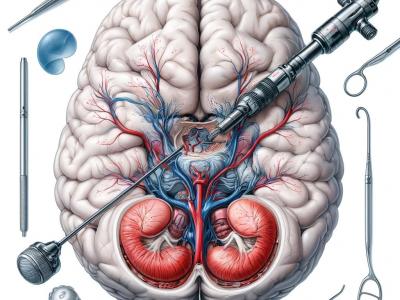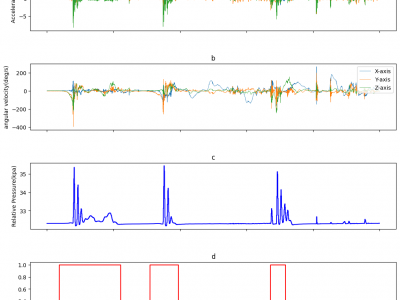Machine Learning
This dataset comprises 1718 annotated images extracted from 29 video clips recorded during Endoscopic Third Ventriculostomy (ETV) procedures, each captured at a frame rate of 25 FPS. Out of these images, 1645 are allocated for the training set, while the remainder is designated for the testing set. The images contain a total of 4013 anatomical or intracranial structures, annotated with bounding boxes and class names for each structure. Additionally, there are at least three language descriptions of varying technicality levels provided for each structure.
- Categories:
 388 Views
388 Views
This data reflects the prevalence and adoption of smart devices. The experimental setup to generate the IDSIoT2024 dataset is based on an IoT network configuration consisting of seven smart devices, each contributing to a diverse representation of IoT devices. These include a smartwatch, smartphone, surveillance camera, smart vacuum and mop robot, laptop, smart TV, and smart light. Among these, the laptop serves a dual purpose within the network.
- Categories:
 1263 Views
1263 Views¢This study delves into the connections between green ELT, DEIB, virtual reality, mediation, life skills, and task-based teaching, learning, and assessment in the context of sustainable and inclusive education. The study emphasizes the significance of incorporating ecological concepts into language instruction, advocating for diversity, fairness, and inclusivity in learning environments, and using virtual reality technology to augment language acquisition.
- Categories:
 141 Views
141 Views
Human facial data hold tremendous potential to address a variety of classification problems, including face recognition, age estimation, gender identification, emotion analysis, and race classification. However, recent privacy regulations, such as the EU General Data Protection Regulation, have restricted the ways in which human images may be collected and used for research.
- Categories:
 332 Views
332 Views
The dataset provides an end-to-end (E2E) perspective of the performance of 360-video services over mobile networks. The data was collected using a network-in-a-box setup in conjunction with a Meta Quest 2 head-mounted display (HMD) and a customer premises equipment (CPE) to provide 5G connectivity to the glasses (WiFi-native).
- Categories:
 155 Views
155 Views
The development of metaverses and virtual worlds on various platforms, including mobile devices, has led to the growth of applications in virtual reality (VR) and augmented reality (AR) in recent years. This application growth is paralleled by a growth of interest in analyzing and understanding AR/VR applications from security and performance standpoints. Despite this growing interest, benchmark datasets are lacking to facilitate this research pursuit.
- Categories:
 317 Views
317 ViewsThis is the pest image dataset. With this data set at hand, scientists or software engineers may create programs capable of recognizing when creatures harm farm produce. This breadth extends not only across different plants but also covers many types of bugs like aphids, leafhoppers, beetles , caterpillars etcetera providing a large diverse pool from which one can train models designed to detect pests. Arranging photos by pest species makes it easy for people looking into them understand what they should expect find.
- Categories:
 1149 Views
1149 Views
The original data includes structured and unstructured impact factors. The structured impact factors are from the wind database, and the unstructured impact factors are from the official Baidu Index website, obtained through the Python 3.8 crawler.
The preprocessed data is filled with the original data after excluding outliers and some missing values, which is used to screen influencing factors.
- Categories:
 130 Views
130 ViewsThe "CloudPatch-7 Hyperspectral Dataset" comprises a manually curated collection of hyperspectral images, focused on pixel classification of atmospheric cloud classes. This labeled dataset features 380 patches, each a 50x50 pixel grid, derived from 28 larger, unlabeled parent images approximately 4402-by-1600 pixels in size. Captured using the Resonon PIKA XC2 camera, these images span 462 spectral bands from 400 to 1000 nm.
- Categories:
 463 Views
463 ViewsThe data was collected by outfitting one of the players with the experimental balloon, which incorporated the embedded circuit and sensors. The sensors positioned at the top-right to the player within the bubble balloon, where a player stand inside. The sensors' data were collected at specific sampling frequencies (Accelerometer: 1000Hz, Gyroscope: 1000Hz, and Pressure: 40Hz). The experiment was conducted involving five different players. This approach allowed for the inclusion of diverse data samples, taking into account variations in player metrics, movements, and gameplay dynamics.
- Categories:
 174 Views
174 Views


